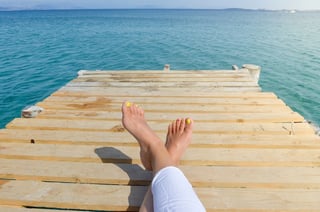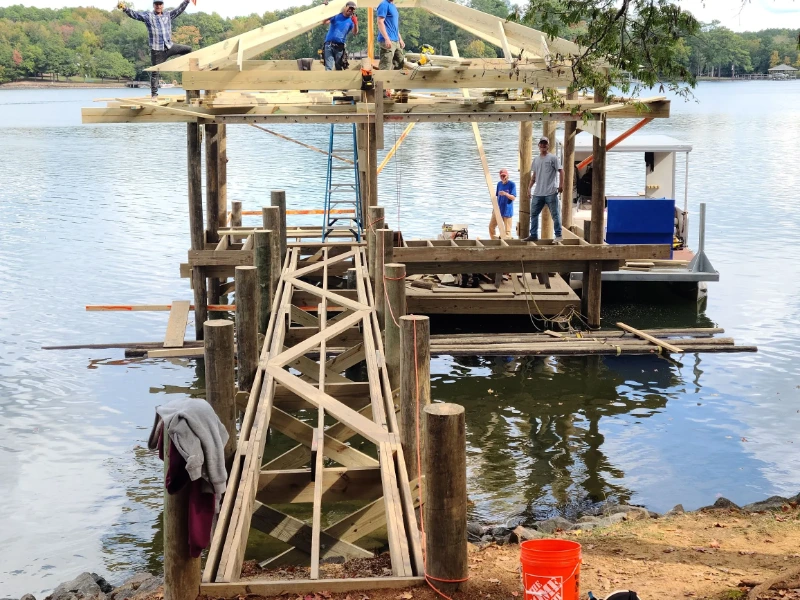Leading Indicators You Need Expert Dock Repairs This Period
Leading Indicators You Need Expert Dock Repairs This Period
Blog Article
Efficient Dock Fixing Techniques: Making Certain Architectural Integrity
Guaranteeing the architectural integrity of docks via efficient repair strategies is vital for the longevity and security of aquatic facilities. Ultimately, selecting the best repair products, such as composite materials and corrosion-resistant alloys, is critical for toughness.
Assessing Dock Damage
Assessing dock damage is an essential first step in guaranteeing the architectural stability and safety and security of any kind of docking center. Trick aspects to examine consist of the dock's structure, pilings, decking, and hardware (Dock Repairs).
Structural engineers or qualified inspectors generally carry out these assessments making use of specialized tools and techniques. Undersea inspections might use sonar tools or remotely ran lorries (ROVs) to discover submerged damage. Above water, visual examinations are complemented by making use of moisture meters and various other analysis devices to discover underlying issues not right away noticeable to the naked eye.

Choosing Repair Work Products
Selecting the suitable repair service products is a crucial step in the dock reconstruction process, one that directly influences the durability and performance of the repaired structure. Material choice must be driven by elements such as ecological conditions, load-bearing requirements, and compatibility with existing dock elements. For circumstances, wood is a standard option for docks because of its natural resilience and visual charm. Nevertheless, picking the best type of timber, such as pressure-treated lumber or normally rot-resistant varieties like cedar or teak, is important to endure water settings.
In addition to wood, composite products are increasingly preferred because of their longevity and reduced upkeep demands. Compounds, typically made from a mix of plastic and wood fibers, use outstanding resistance to rot, pests, and UV damage. For steel docks, selecting corrosion-resistant alloys such as galvanized steel or marine-grade light weight aluminum is necessary to prevent rust and ensure structural honesty in saline water conditions.
Epoxy resins and marine-grade sealants are important for fixing splits and sealing joints, supplying a water resistant obstacle and boosting the dock's general strength. By carefully picking top quality products, dock fixings can attain long-lasting outcomes, thereby protecting versus future destruction and making certain safe, reputable use.
Architectural Reinforcement Strategies
Effective architectural reinforcement techniques are crucial in making sure the stability and long life of dock fixings. One fundamental method involves the usage of steel or composite support bars (rebar) within concrete structures. Rebar supplies added tensile toughness, avoiding cracks and dispersing lots much more equally. This technique is specifically reliable for docks revealed to hefty lots or rough ecological conditions.
Another important strategy is the application of fiber-reinforced polymers (FRP) These materials use high strength-to-weight ratios and superb resistance to corrosion, making them excellent for reinforcing wood or concrete docks. FRP can be used in strips or sheets and bonded with epoxy materials to boost structural stability.
Supporting and anchoring systems also play a crucial duty in architectural reinforcement. Cross-bracing, utilizing steel or wooden beams, can combat lateral forces, reducing guiding and motion. Securing systems, such as helical piers or driven stacks, offer a secure foundation by moving tons to much deeper, more secure soil layers.
Last but not least, the integration of load-distribution plates can aid distribute weight extra evenly throughout the dock's More Bonuses surface, reducing local anxiety points. These techniques jointly make certain that anchors continue to be durable and secure, efficient in holding up against the roughness of their operational environment.
Advanced Repair Approaches

One more sophisticated technique entails undersea welding, which permits for repairs to be conducted without the requirement to dewater the location. This technique is especially advantageous for dealing with structural problems in submerged dock elements, ensuring marginal disruption to procedures. Enhanced welding methods, combined with robot systems, deliver precision and reliability, thereby prolonging the lifespan of the dock.
Additionally, cathodic defense systems are applied this page to prevent rust in metal dock frameworks. By utilizing sacrificial anodes or amazed current systems, these techniques efficiently minimize the electrochemical processes that cause material wear and tear.
Last but not least, progressed monitoring technologies, such as structural health and wellness tracking (SHM) systems, give real-time data on the condition of dock frameworks. These systems enable aggressive maintenance and prompt interventions, eventually ensuring the long-term structural integrity of the dock.
Maintenance and Prevention
Maintenance and prevention are basic principles that underpin the longevity and safety of dock frameworks. Normal assessments are critical, permitting for early detection of damage, possible weaknesses, and environmental influences. A proactive technique, involving regular look for corrosion, rot, and structural changes, alleviates pricey fixings and lengthens the dock's functional life.
Precautionary steps ought to include applying protective finishes to steel components to defend against corrosion and making use of treated wood to stand up to degeneration. Furthermore, making certain correct drainage and air flow can protect against water buildup, which is a common source of structural destruction. Incorporating quality products and adhering to supplier guidelines throughout building and fixing stages also play essential roles in improving sturdiness.

Training special info workers in dock maintenance best practices guarantees regular application of precautionary procedures. Leveraging technical breakthroughs, such as drones for assessments and sensing units for real-time tracking, can even more improve maintenance initiatives. By focusing on upkeep and prevention, dock owners can make certain structural stability, functional safety, and affordable management over the dock's life-span.
Final Thought
Finally, preserving the architectural honesty of aquatic facilities necessitates extensive dock repair work techniques. Detailed assessments utilizing advanced devices uncover both noticeable and concealed damages, while the selection of appropriate fixing products improves resilience. Executing architectural reinforcement techniques addresses tension factors efficiently. Advanced repair service techniques, combined with normal maintenance practices, guarantee the dock stays secure and operational under diverse environmental conditions. Embracing these strategies dramatically lengthens the life-span and capability of aquatic infrastructure.
Making certain the architectural stability of docks through efficient fixing methods is paramount for the longevity and safety and security of aquatic centers.Picking the proper fixing products is a crucial step in the dock restoration procedure, one that straight affects the longevity and performance of the repaired framework.Efficient architectural support techniques are vital in guaranteeing the security and longevity of dock repairs. By prioritizing upkeep and avoidance, dock proprietors can guarantee architectural integrity, operational security, and economical administration over the dock's life-span.
In final thought, preserving the architectural honesty of aquatic facilities requires comprehensive dock repair service strategies.
Report this page